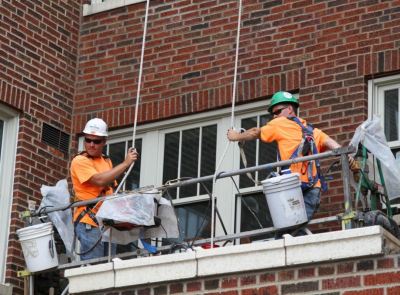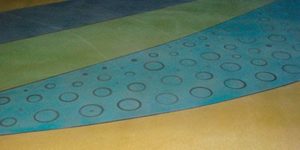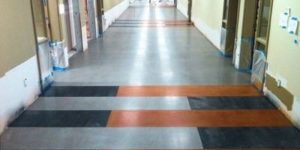 It’s back to school time and facility managers are busily preparing their buildings’ classrooms, gymnasiums, cafeterias and other interior spaces for the rush of students returning from summer break. Obviously, an important task, but how much consideration should you give to ensuring that the building’s exterior façade is also ready? Maintaining educational facility facades proves to be just as important.
It’s back to school time and facility managers are busily preparing their buildings’ classrooms, gymnasiums, cafeterias and other interior spaces for the rush of students returning from summer break. Obviously, an important task, but how much consideration should you give to ensuring that the building’s exterior façade is also ready? Maintaining educational facility facades proves to be just as important.
The façade restoration experts at Western Specialty Contractors stress that maintaining the exteriors of educational facilities is just as important as maintaining their interiors for the safety and comfort of the students, faculty and staff.
There are several areas of a building’s exterior, says John Meyer, Western Specialty Contractors – Denver Branch Manager, that can deteriorate and allow water penetration. Over time, this can cause interior damage as well as other structural issues. Routinely inspecting and making repairs to those areas in a timely fashion will help to ensure a safe and attractive learning environment for everyone and reduce costly repairs down the line.
Brick and Mortar Joints
Contractors build a brick façade from the ground up. They build one story, then install a steel lintel for the next floor up. Sometimes contractors dont install those lintels properly and instead install them right on top of the brick. Therefore, when the next floor is built up, it doesn’t allow for the expansion and drainage that is required, which ultimately causes the brick to self-destruct and spall. If this condition is not attended to in time, the entire brick wall may have to be repaired.
Flashing Systems
The flashing systems are another important element of a building’s exterior to consider. The mindset of the flashing system installer is generally not on the system as a barrier. In many cases involving masonry walls, when the brick is pulled out, it appears that not a lot of attention was given to the actual sealing or waterproofing of the backup substrate to the flashing. It may be absent or not installed properly. If this problem exists, the flashing system may have to be re-done, which involves removing several courses of brick above the steel lintel so that new flashing and waterproofing can be installed. This work will help ensure that any water that enters the masonry will be allowed to escape in the location of the flashing and away from the building.
Caulking and Sealants
A large and important part of any building’s exterior are its sealants. When the sealants on a building’s exterior appear cracked, spongy, or chalky it indicates that they are probably beyond their life expectancy. With most urethane sealants, the life expectancy is generally in the 5-10-year range. Silicone sealants will last longer than urethane sealants but will still need attention after about the 10-year mark.
Cleaning and Sealing
There are a lot of ways to clean different façade surfaces. You must give careful consideration to which type of processes you use to clean the various facades. Some processes can be very damaging to the substrate. For example, sandblasting is a quick way of cleaning a surface. However, sandblasting can be damaging to a lot of surfaces. There are also a lot of different cleaning compounds – some are stronger, some are milder. It is important to hire a professional architect, engineer and/or specialty contractor. You are looking for a professional who has experience with proper façade cleaning to ensure that you do not damage the building. Cleaning a façade is primarily for aesthetics, however it is also for cleaning algae, fungi and carbons that attach to buildings and can advance the deterioration of the structure.
While there are many different types of masonry construction, there are also different types of sealers to protect them. You can use a Rilem Tube Test to determine the effectiveness of a building’s existing water repellency. With this test, one seals the Rilem tube to the building over the mortar joint of the masonry unit. You then fill it with water to simulate an 80-mph, wind-driven rain to the surface. The tube then calculates the rate that the water absorbs into the well. The faster the water disappears into the mortar joint, this means you may need more sealer. WSC recommends working with an architect, engineer or experienced specialty contractor. With their help, you can determine existing conditions and the best type of sealer for the building.
Plaza Decks
In the case of plaza decks, the topping systems such as a poured concrete slab or pavers over a waterproof membrane can deteriorate along with the waterproofing below causing the need for complete removal and re-installation. Sometimes the topping systems are in good shape, but the waterproofing is in bad shape; maybe it never had proper detailing, or it could be a number of other malfunctions. If water is getting into the building from the plaza, you should fix the plaza deck.
In the instance that repairs cannot wait until the school year is complete, be sure to find a specialty contractor that has experience with minimizing construction-related noises and can keep intrusions to a minimum so as to not disrupt the learning environment while the repairs are underway.
For more information about façade inspections and restoration, contact the Western Specialty Contractors branch location nearest you: www.westernspecialtycontractors.com/western-locations/. For a sampling of Western’s educational projects – www.westernspecialtycontractors.com/projects/markets/educational/.
About Western Specialty Contractors
Western Specialty Contractors has been family-owned and operated for more than 100 years. It is the nation’s largest specialty contractor in masonry and concrete restoration, waterproofing and specialty roofing. Western offers a nationwide network of expertise that building owners, engineers, architects and also property managers can count on to develop cost-effective, corrective measures that can add years of useful life to a variety of structures including industrial, commercial, healthcare, historic, educational and government buildings, parking structures and sports stadiums. Western has its headquarters in St. Louis, Mo. It also has 30 branch offices nationwide. Additionally, it employs more than 1,200 salaried and hourly professionals who offer the best, time-tested techniques and innovative technology. For more information about Western Specialty Contractors, you can also visit www.westernspecialtycontractors.com.














